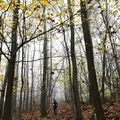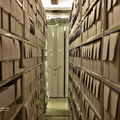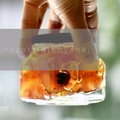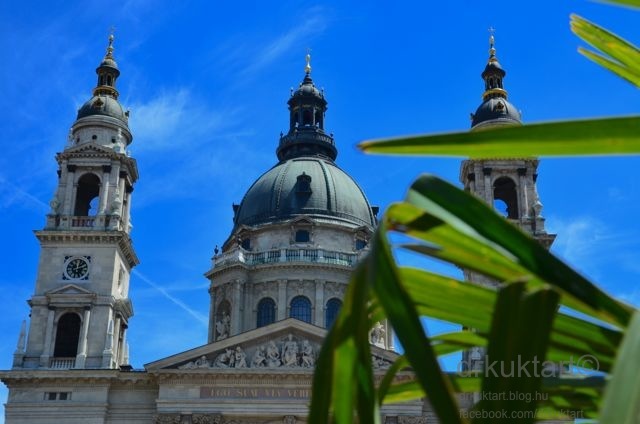
A budapesti Szent István Bazilika kupolájába felmászni minden évszakban és minden napszakban megéri - feltéve, ha a kupola nyitva van. Megmutatom miért is, kövessetek.
It's always worth to visit the cupola of the St. Stephen's Basilica in Budapest independently of the period of the day or the year provided if you visit it during the opening hours. Follow me and I show you why.
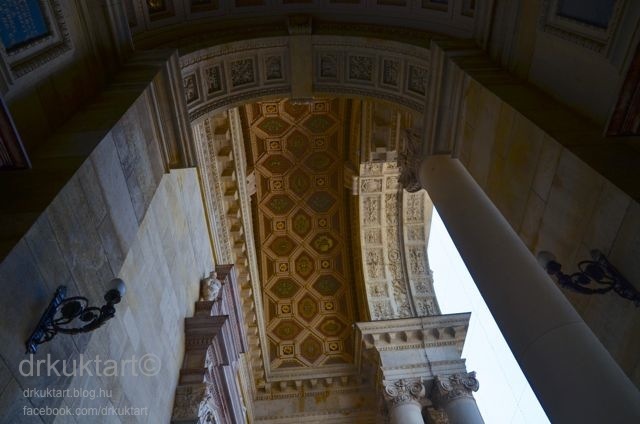
Persze, ha már arra járunk érdemes útbaejteni magát a székesegyházat is, hiszen fenséges az épület, s többek között itt őrzik a Szent Jobbot is.
Nevertheless, if you are close to the church, don't miss to enter the building as well. The inside is amazing and you can visit the chapel where the Holy Right is placed.
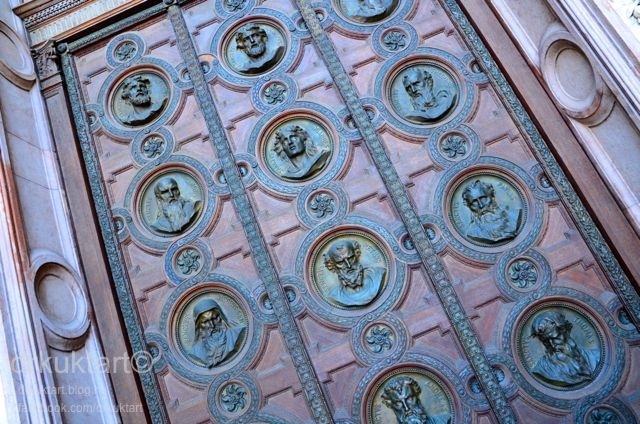
A székesegyház honlapja szerint "A budapesti Szent István Bazilika hazánk egyik legszebb, legjelentősebb egyházi és idegenforgalmi nevezetessége. Ennek oka egyrészt a névadó szent királyt, az ország államalapítóját megillettő tisztelet, a történelmi múlt, másrészt maga az épület műemléki és művészeti értéke. E templom építése érdekében az 1810-es években gyűjtés indult, a munkálatokat azonban csak 1851. augusztus 14-én kezdték el, Hild József pesti választópolgár és építész az esztergomi és egri székesegyház alkotójának tervei szerint. A munkát haláláig, 1867. március 6-ig vezette. Pest város tanácsa a fontos épület további építész-tervező művezetését a kor elismert mesterére, számos fővárosi középület, köztük az Operaház alkotójára, Ybl Miklósra bízta, aki a befejezésig folytatta, de halála miatt az épületbelső és a képzőművészeti díszítő munkálatok már Kauser József irányításával készültetk el 1905-re. Nevezetes volt a Bazilika történetében az 1868. január 22-i dátum, amikor a Hild tervei szerint már felfalazott kupola és kupoladob beomlott, kivitelezési- és anyaghibák miatt. A kupolát tartó pillérekhez ajándékba kapott, s igen vegyes minőségű és szilárdságú kőanyagot használtak, továbbá a kupoladob az az tartó boltívek belső peremére épült, ami miatt a pillérek és az összekötő hevederek, valamint a csegelyek terhelése féloldalaslett, s a szerkezet egyensúlyának hiánya okozta a beomlást. Az építkezés ezután több mint egy évig szünetelt, majd a törmelék kihordása, a rosszul megépített részek bontása egészen 1871-ig tartott. Az építkezés folytatására Ybl Miklós új terveket készített, illetve a régieket dolgozta át nemcsak a szerkezet, hanem a megjelenés tekintetében is. Hild József hellenisztikus formavilágát, klasszicista stílusát Ybl neoreneszánsza váltotta fel 1875-től, és 1891-ben bekövetkezett halála után is az ő vázlatai, elképzelése szerint folytak a munkálatok az 1905-ös felszentelésig."
According to the Basilica's website 'St Stephen’s Basilica of Budapest is one of the most beautiful and significant churches and touristic attractions of the country. This is partly due to its historical heritage, of being dedicated to the holy king St Stephen who was also the founder of the Hungarian state, and partly to the architectural and artistic value of the building itself. A campaign to raise funds for the construction of the church commenced in the 1810-es, however, construction works did not start until August 14, 1851, based on the drawings of József Hild, a leading citizen and architect of Pest, who also designed the cathedrals in Esztergom and Eger. József Hild supervised the works until his death as of March 6, 1867. The Council of the City of Pest appointed Miklós Ybl, an acknowledged master at the time and designer of numerous public buildings in the capital city including the Opera House, to continue to supervise the design and construction of this prominent building. After his death, the interior of the building and the fine artistic and decorative works were completed by 1905 under the supervision of József Kauser. January 22, 1868 was an important date in the history of the Basilica. It was on this day that the cupola and the cupola drum constructed according to the designs of Hild collapsed due to defects in materials and craftmanship. The pillars holding the arches of the cupola were constructed with donated stones of assorted quality and solidity. The cupola drum was built on the inner rim of the arches underpinning it, resulting in a precariously balanced structure which distributed the load unevenly on the pillars. The imbalance of the structure in turn gave rise to the collapse, after which works paused for more than a year, when the removal of the debris and the demolition of the poorly constructed parts commenced and continued until 1871. Miklós Ybl prepared new designs for continuing the construction works or revised the previous ones in terms of the structure and the appearance alike. From 1875, the Hellenistic forms and Classicist style were replaced by Neo-Renaissance elements applied by Ybl, and works continued, even after his death of 1891, according to his sketches and ideas until the long-last dedication of the church in 1905'.
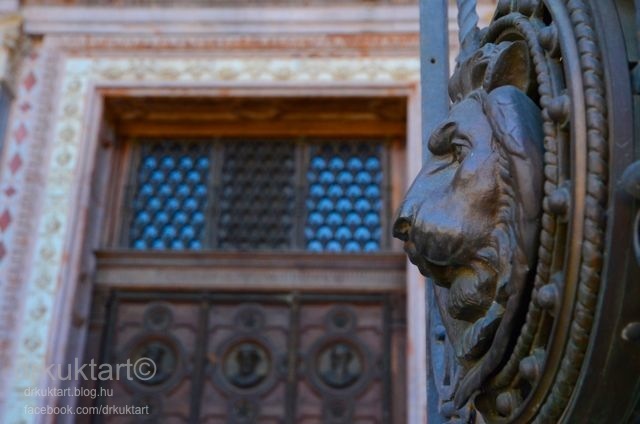
A Bazilikát csodálatos vaskapu óvja, sőt, Budapest közelmúltban még jobban fellendült éjszakai életének és a közelben található vendéglátóipari egységek közönségének éjszakai távoltartása érdekében a Bazilika lépcsőjét is vaskorlát övezi immár.
The Basilica is protected by an amazing gate which is made from iron. Nevertheless thanks for the nightlife of Budapest, the stairs which lead to the Basilica, are protected by iron fence as well.
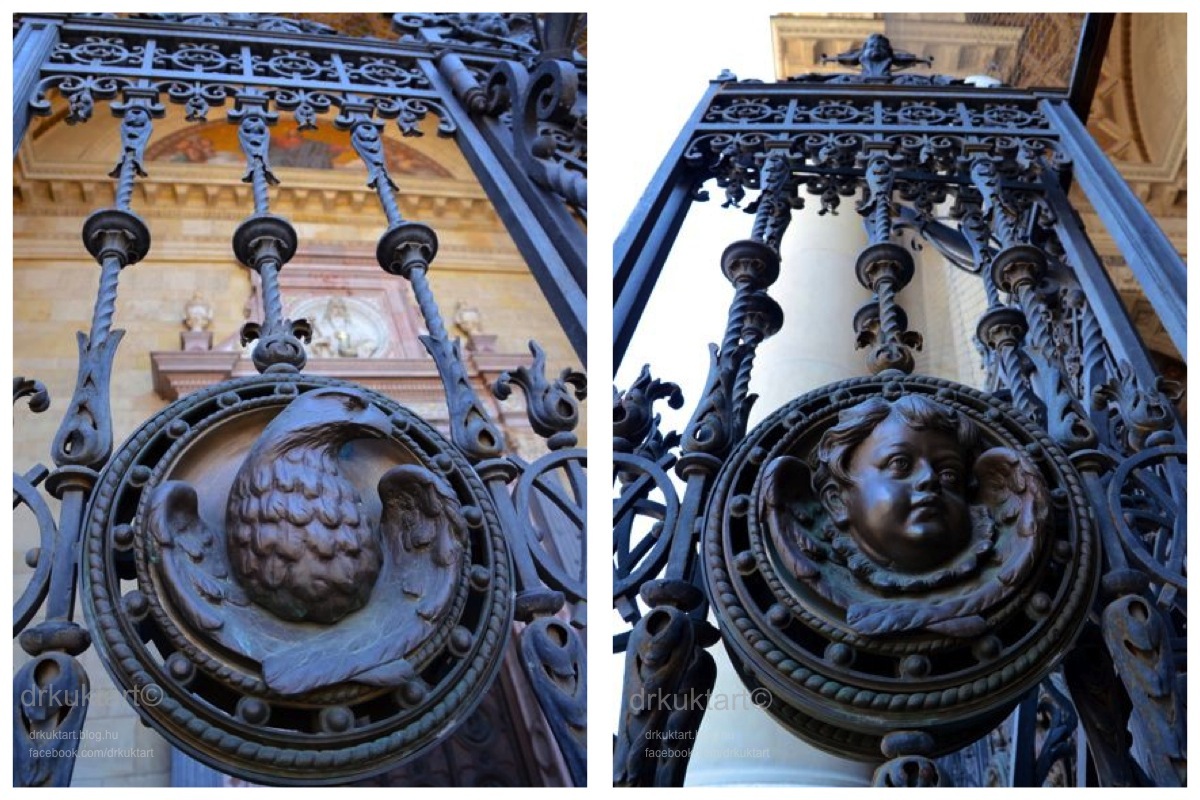
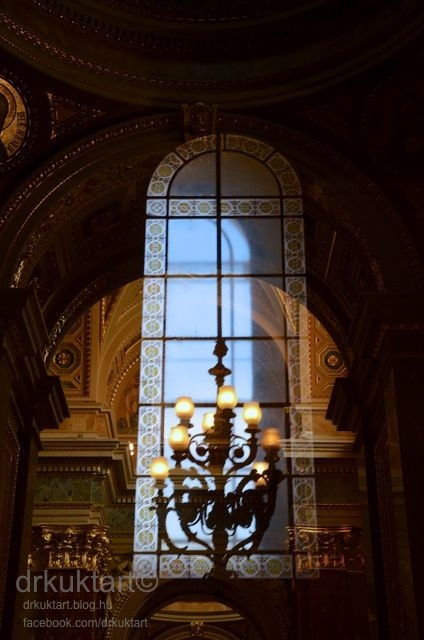
A templomba (ide nem értve a kupolát és a vezetett csoportokat) egyelőre nem kell belépőjegyet váltani, amennyiben csupán egyéni látogatóként óhajtjuk megtekinteni az épületet, ám legutóbbi ottjártamkor a székesegyházban rendkívül frappánsan oldották meg, hogy a látogatók mégis adakozzanak az épület fenntartása érdekében. Éppenhogy belépnél az oldalhajóba, egy köpönyeges úriember szónélkül - szimpla testbeszéddel - megállít, és az ajtóban felállított admonánygyűjtő perselyre mutat, jelezve ezáltal, hogy illene adakozni. Természetesen egy szót sem szól, így a külföldi turisták fejében ki tudja mi fordult meg eme produkció láttán. Az enyémben az, hogy az adományozás számomra mást jelent, és nem derogál belépőjegyet fizetni, de akkor azt annak rendje és módja szerint tenném. Ugyanis ez se nem adomány, se nem belépőjegy. Az idegenvezetés időpontjait és díjait ide kattintva érheted el.
The visit of the church is free of charge except the guided tours and the cupola. All donations are warmly welcome. You can find more information about the fees and dates of the guided tours here.
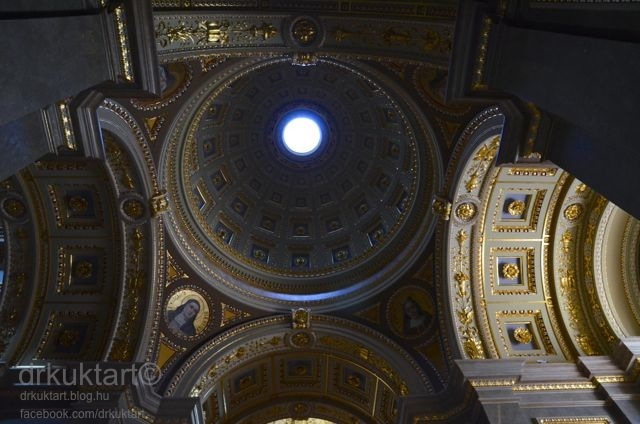
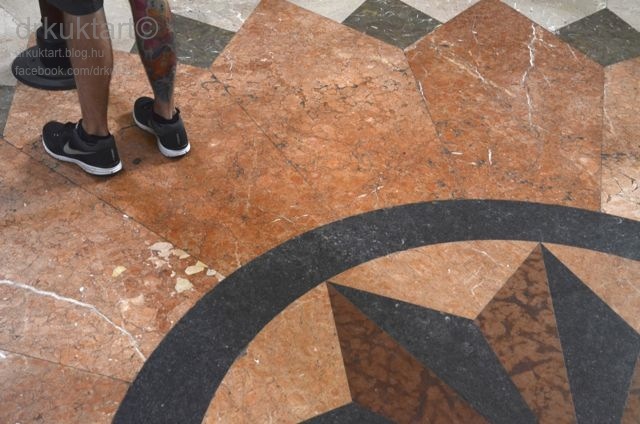

A honlap szerint a "a Szent István Bazilika orgonája az Angster József és fia orgonaépítő cég készítette. A céget alapító Angster József (1834-1918) a párizsi Cavaillé-Coll orgonaépítőnél tanult három évig és az ő elvei alapján tervezte és készítette az orgonáit. Az 1905-ben készült 450. opus számú hangszer három manuálos volt, 65 regiszterrel, pneumatikus trakturával. Az orgonaházat Kauser József tervei alapján Thék Endre bútorgyára készítette. 1932-ben ugyancsak az Angster cég négy manuálra bővítette, 76 regiszterrel, elektro-pneumatikus traktúrával. 1938-ban a Rieger orgonagyár új játékasztalt készített, a szélládákat kúprendszerre alakította át, a regiszterek számát 79-re bővétette. A hangszer teljes restaurálása 1993-ban kezdődött Váradi és Fia budapesti orgonaépítők kivitelezésében."
The Bsilica's organ is made in 1905 by the company of Joseph Angster (Angster József) and his son. The organ cover was made by the furniture factory of Andrew Thék (Thék Endre) on the basic of the designs of Joseph Kauser (Kauser József). The organ was renovated by the company of Váradi and his son from 1993.
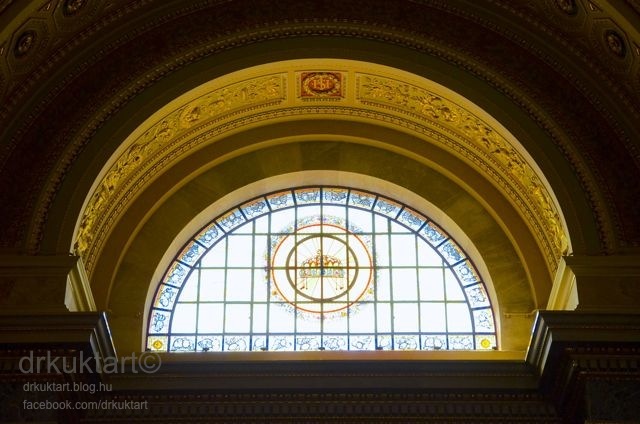
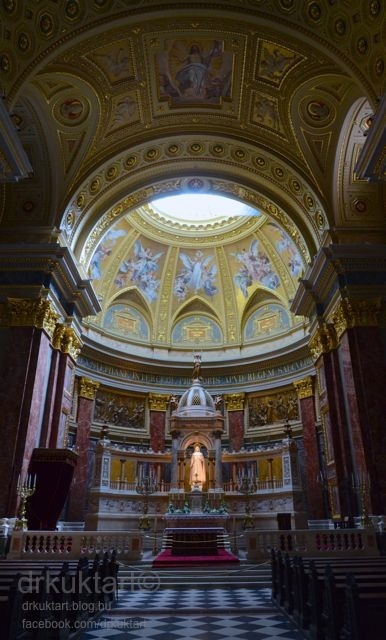
Stóbl Alajos szobra Szent István királyról.
The sculpture of St. Stephen king which is made by Alajos Stóbl who was a Hungarian sculptor and artist.
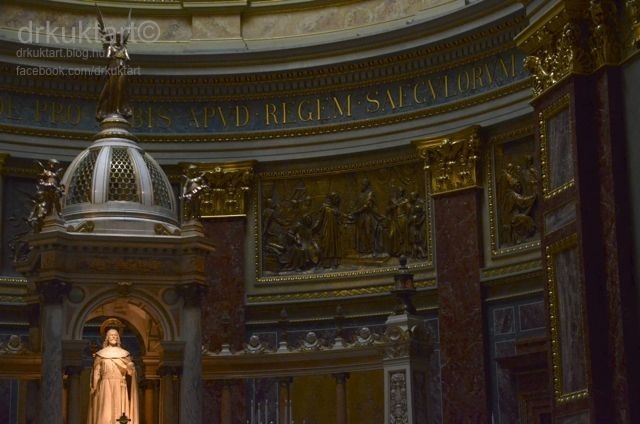

A csodálatos kupola.
The amazing cupola of the Basilica.
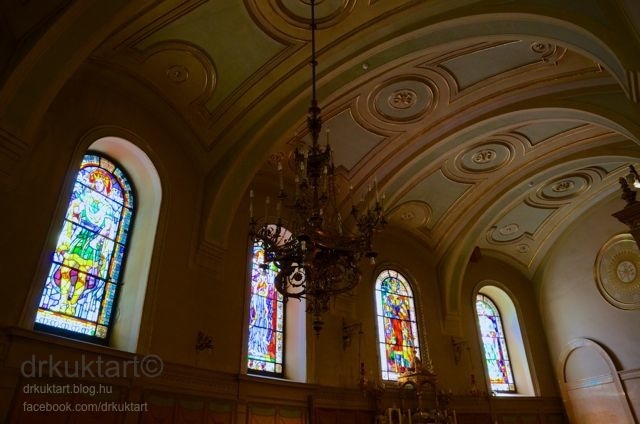
A Szent Jobb kápolna a főoltárral szemben állva balkézfelől található, s bármily' meglepő, itt őrzik a Szent Jobbot.
You can find the Chapel of Holy Right on the left side of the main altar.
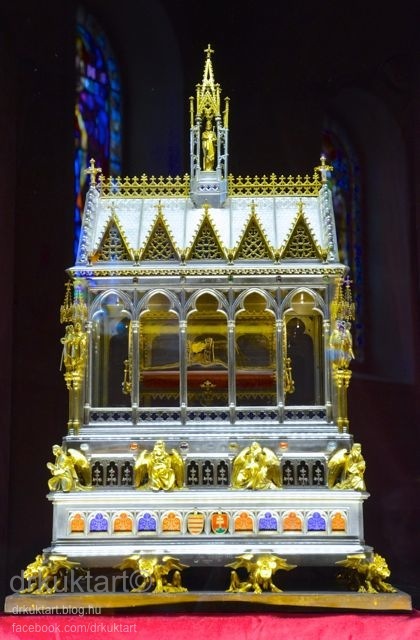
A honlap szerint "Szent István király halála után trónviszályos, zűrzavaros idők következtek. Ekkor a fehérvári káptalan, féltve a bebalzsamozott és mumifikálódott holttestet a megszentségtelenítéstől, kiemelte a bazilika közepén álló márványszarkofágból, ahová 1038. augusztus 15-én temették el István királyt, és a bazilika alatt lévő sírkamrában rejtette el. Ekkor történt, hogy az épségben megmaradt jobb kezet leválasztották, mivel csodás erőt tulajdonítottak neki, és a bazilika kincstárába vitték. A kincstár őre Merkur volt, aki később eltulajdonította a szent ereklyét és bihari birtokán rejtette el. Mikor Szent László hírt hallott az ereklyéről, felkereste Merkurt a birtokán. Megbocsátott a "tolvajnak" és a Szent Jobb megtalálásának helyén, első királyunk tiszteltére, a szent ereklye méltó elhelyezésére, Szent Jobbi apátságot alapított. (Az apátság, s a körülötte kialakult mezőváros neve Szentjobb, a mai Románia területén található, román neve: Siniob.) Így vette kezdetét a Szent Jobb nyilvános tisztelete és ünnepe. A szentjobbi apátságban őrzött ereklyéhez évszázadokon át zarándokoltak a hívek. A XV. században kezdődött a Szent Jobb vándorútja, mikor is először Székesfehérvárra vitték, majd a török uralom alatt Boszniába, később (1590 körül) Raguzába, a mai Dubrovnikba került, az ottani domonkos szerzetesekhez. Mikor Mária Terézia tudomást szerzett az ereklye hollétéről, mindent elkövetett annak visszaszerzése érdekében. Hosszadalmas diplomáciai tárgyalások után a raguzaiak kiadták, így 1771 április 16-án már Bécsben csodálhatták a hívek, majd nagy pompával Budára szállították. Itt a Szent Jobbot az Angolkisasszonyok gondjaira bízta Mária Terézia, ezzel együtt elrendelte Szent István napjának, augusztus 20-ának megünneplését. Az 1800-as évek elején II. József rendeletére a keresztesek férfirendje őrizte, majd a rend megszűnése után, 1865-től az esztergomi főegyházmegye feladata volt a Szent Jobb biztonságos őrzése. Az 1900-as évek elején a budavári palota Zsigmond-kápolnájába került, ahol 1944-ig volt látható. A Szent Jobb történetének megbecsülésekben bővelkedő időszaka a két világháború közti évekre tehető. Ennek is kiemelkedő eseménye volt az 1938-as esztendő. Még 1937 októberében a Magyar Katolikus Püspöki Kar elfogadta a "kettős szentév" programját, amely a 34. eucharisztikus világkongresszus és a Szent István jubileumi év előkészítésének tervét tartalmazza. Amikor meghirdették első apostoli királyunk halála 900. évfordulójának megünneplését - a Szent István jubileumi évet -, elhatározták, hogy a kereszténység ezen kimagasló ünnepén méltóképpen fognak megemlékezni Szent István királyunkról, és ez alkalomból a Szent Jobbot körülhordozzák az országban.Az ünnepségsorozat nyitó rendezvényét május 30-án, közvetlenül az eucharisztikus világkongresszus bezárását követően rendezték. A II. világháború alatt a Szent Jobbot a koronázási ékszerekkel együtt elhurcolták, és egy salzburgi barlang mélyén rejtették el. Itt talált rá az amerikai hadsereg, s megőrzésre a salzburgi érseknek adták át. Az Amerikai Katonai Misszió három tagja hozta vissza Magyarországra, az 1945. augusztus 20-i körmenetre. Az ünnepség végén a Szent Jobbot visszavitték az Angolkisasszonyok zárdájába, és ott őrizték 1950-ig, a rend feloszlatásáig. Ezután a Szent István Bazilika plébániájának páncélszekrényében rejtették el, mert ezekben az években már nem volt szabad nyilvános körmentben tisztelni Szent István jobbját. Így volt ez 1987. augusztus 20-ig, amikor a Szent István Bazilikában Dr. Paskai László bíboros, esztergomi érsek fölszentelte a Szent Jobb kápolnát, melynek létrejöttét néhai Lékai László bíboros kezdeményezte. Itt helyezték el nagy királyunk ereklyéjét, mely azóta is látogatható. Szent István király halálának 950. évfordulóján, 1988-ban ismét sor kerülhetett a Szent Jobb országjárására. Az érseki és a püspöki székvárosokban, valamint Pannonhalmán tízezrek fogadták a Nemzeti Ereklyét megilletődve és áhítattal.1989-től ismét évről évre elindul Szent István napján a könyörgő körmenet."
According to the website 'The death of king St Stephen was followed by a turbulent period characterized by struggles for the throne. The chapter of Fehérvár feared that the embalmed and mummified corpse might be desecrated, therefore ordered its removal from the marble sarcophagus standing in the middle of the basilica where king Stephen was buried on August 15, 1038 and hid it in the tomb under the basilica. It was at this time that the right hand of the king, which remained intact and was believed to have miraculous power, was detached and taken to the treasury of the basilica. Later on, a treasury ward called Merkur stole the holy relic and hid it on his estate in Bihar. When king St Ladislaus heard about the relic, he visited Merkur on his estate. He forgave the theft and founded an abbey at the place where the Holy Right was found in honour of our first king and in order to provide a worthy place for the holy relic. (The abbey and the country town which evolved around the abbey were called Szentjobb meaning “Holy Right” and can be found today in the territory of Romania under the Romanian name Siniob.) This is how the public reverence and celebration of the Holy Right started. Pilgrims were travelling to the relic guarded in the Holy Right Abbey for centuries. The journey of the Holy Right started in the 15th century. First it was taken to Székesfehérvár, then during the Osman Turkish reign to Bosnia and later (at about 1590 A.D.) to the Dominican monks of Raguza, the city known today as Dubrovnik. When Emperess Maria Theresa learnt of the relic’s location, she did her best to get it back. After lengthy diplomatic negotiations, it was finally extradited by the monks of Raguza, and on April 16, 1771 it could already be viewed by believers of Vienna. After that it was transported to Buda with great pomp and ceremony. Emperess Maria Theresa appointed the Order of the Blessed Virgin Mary (called “Angolkisasszonyok” in Hungarian) to take care of the Holy Right and ordered a yearly public celebration on August 20, the day of St Stephen. In the early 1800s, king Joseph II ordered that the Holy Right should be guarded by the male Order of Crusaders and from 1865, the Archdiocese of Esztergom was in charge of the safeguarding of the relic. During the early 1900s, it was taken to the Sigismund chapel in the Buda castle and remained there until 1944. The years between the two World Wars were a period in the history of the Holy Right rich in acknowledgements, with special regard to year 1938. In October, 1937, the Hungarian Catholic Bishops’ Conference accepted the program for the “double holy year”, meaning the plans for preparing for the 34th International Eucharistic Congress and the anniversary year of St Stephen. They proclaimed to celebrate the 900th anniversary of the death of our first apostolic king (the anniversary year of St Stephen) and decided to commemorate king St Stephen in a worthy manner on this very special festival of Christianity, by carrying the Holy Right around the country. The opening event of the series of festivals was organised on May 30, directly after the conclusion of the International Eucharistic Congress. During World War II, the Holy Right and the coronation jewels were taken and hidden in a cave in Salzburg. Later they were found by the US army, whichdelivered the Right Hand to the archbishop of Salzburg for safekeeping. It was returned to Hungary, right on time for the procession of August 20, 1945 by three members of the American Military Mission. At the end of the ceremony, the Holy Right was taken back to the convent of the Order of the Blessed Virgin Mary and was guarded there until the dissolution of the order in 1950. Then it was hidden in the safe of the parish of St Stephen’s Basilica, because in these years it was no more allowed to revere the right of St Stephen in public procession. It remained there until August 20, 1987, when Dr. László Paskai, cardinal and archbishop of Esztergom dedicated the Holy Right chapel, which was established at the initiative of the late cardinal László Lékai. This is where the holy relic of our great king was placed and can be visited until this very day. At the 950th anniversary of the death of king St Stephen, the Holy Right could again be carried around the country. Tens of thousands of believers welcomed the National Relic with reverence in the archbishop’s and bishop’s capital city, as well as in Pannonhalma. Since 1989, the prayer procession has been organised every year on St. Stephen’s day.'
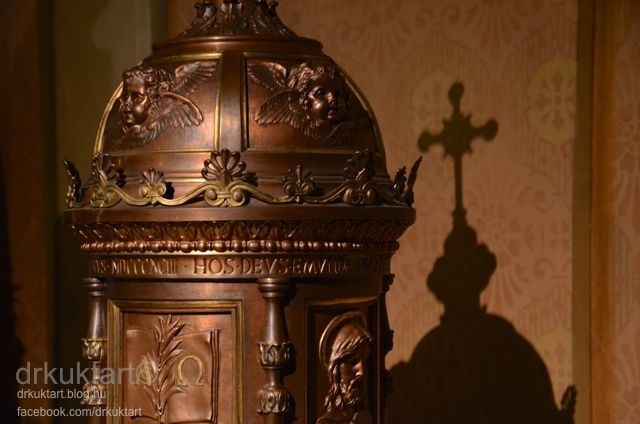

A panorámakilátóba 500,- Ft-os jegy megváltása fejében juthatunk fel lépcsőn vagy lift segítségével. A liftet még nem próbáltam, így arról nyilatkozni nem tudok, a lépcsőzés túlélhető. Létezik diák és nyugdíjas, valamint diák, nyugdíjas, felnőtt csoportos jegy (15 főtől…), amelynek díjairól itt tájékozódhatsz.
If you want to take a look out in the cupola of the Basilica, you have to pay HUF 500 as entrance fee. You can reach the cupola through the staircase or elevator (I never took elevator so I cannot say anything about it). Tickets for students, pensioners or groups (over 14 persons) are also available. For more information about the tickets click here.

Kis streetart a lépcsőfordulóban.
Streetart in the staircase.
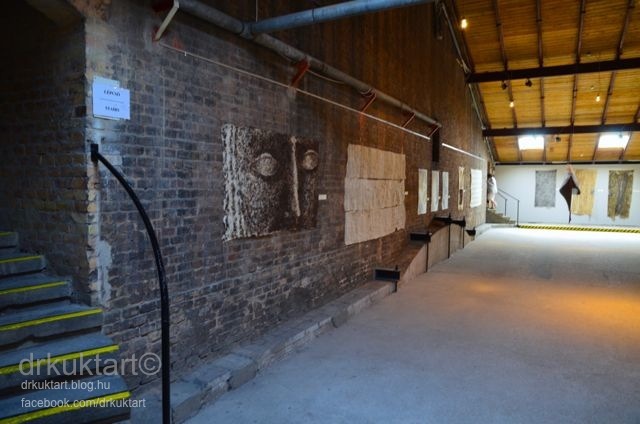
A kupolába félúton egy kiállításba botlottunk, de olyan gyorsan viharoztunk tovább (mit nekünk 364 lépcsőfok), hogy nem volt idő elmélyedni az alkotásokban.
On halfway you can visit an exhibition as well. To tell the truth we didn't visit the exhibition because we really wanted to reach the top. By the way 364 stairs lead you to the top.
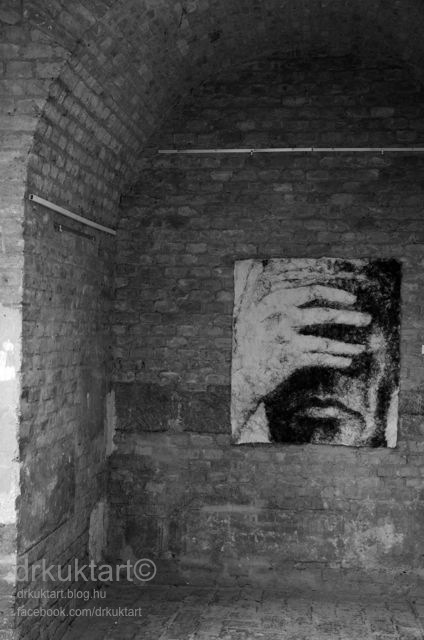
Na, körülbelül mi is ennyit láttunk a kiállításból.
Shame on us, we didn't see anything of the exhibition.
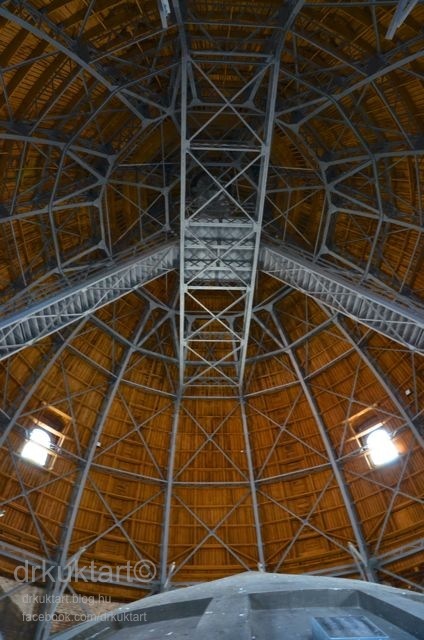
A kupola szerkezete belülről.
The inside of the cupola.
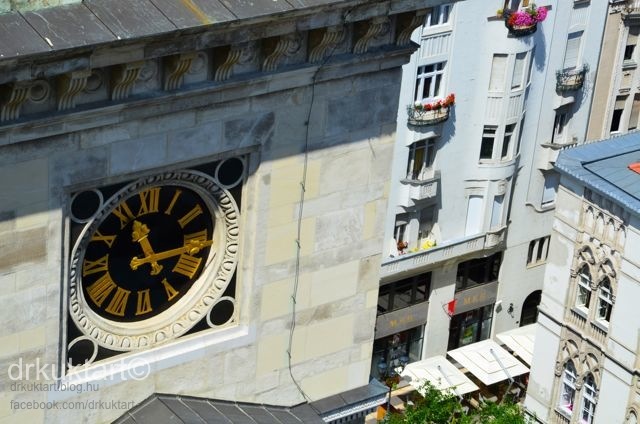
Felérve a kupolába az alábbiakat látod….
You can see the following part of Budapest from the cupola...
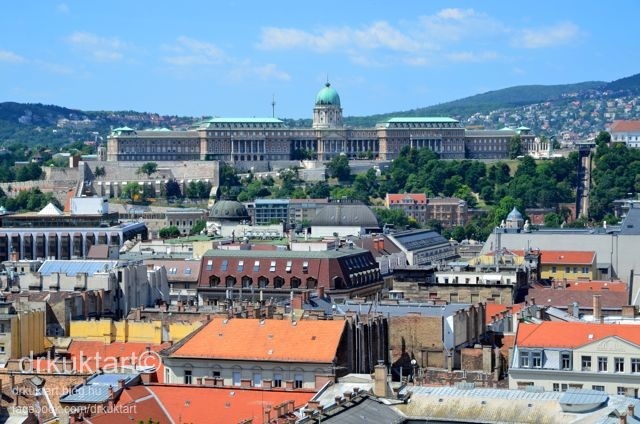
…a Budai Várat (Budavári Palotát, ha így jobban tetszik)….
…the Castle of Buda...
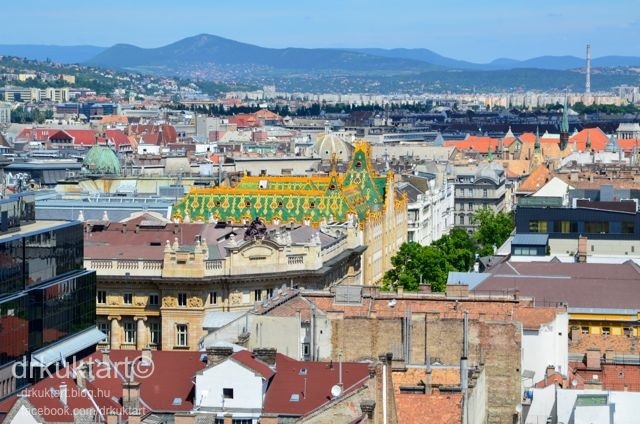
…a Magyar Államkincstár (korábban Postatakarékpénztár) Lechner Ödön által tervezett épületét...
…the roof of the building of the Hungarian State Treasury, designed by Ödön Lechner (Lechner Ödön)...

…a Szent István teret a Zrínyi utcával...
…St. Stephen's square (Szent István tér) and Zrínyi street (Zrínyi utca)...
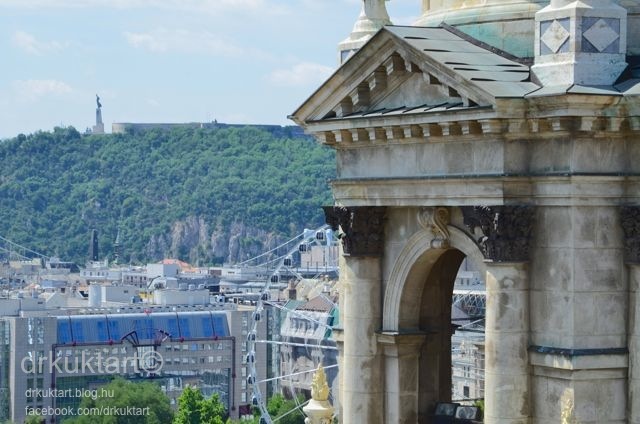
…a Gellért-hegyet, a Kempinski Hotel Budapestet, a szeptemberig az Erzsébet téren felállított Sziget Eye-t (óriáskereket)...
…the Gellért hill, the Kempinski Hotel Budapest, Sziget Eye (the frees wheel which is place on the Erzsébet square until September)...
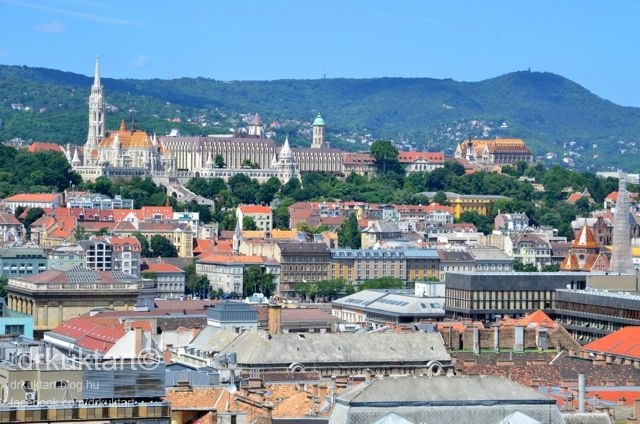
…a Budavári Mátyás-templomot, a Hilton Hotelt, a Halászbástyát és a Magyar Nemzeti Levéltár egyik épületét, a háttérben a János-heggyel….
…the Matthias Church, Hilton Hotel Budapest, Fisherman's Bastion and one of the buildings of National Archives of Hungary in the background with the János hill….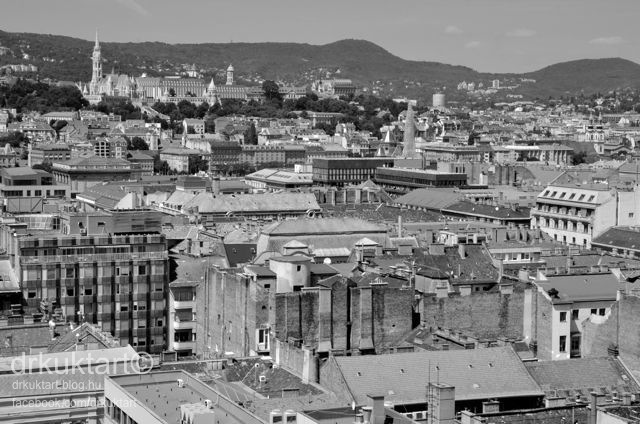
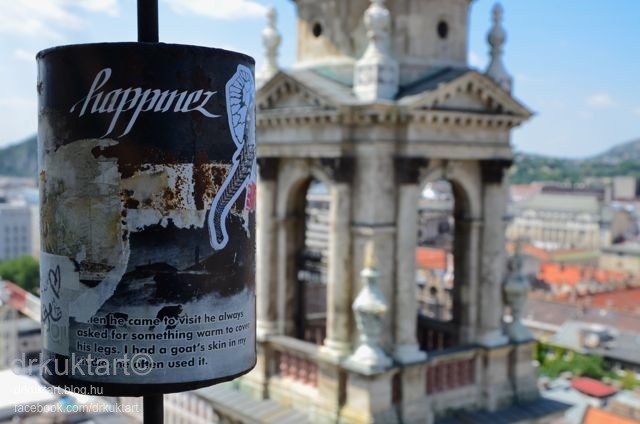
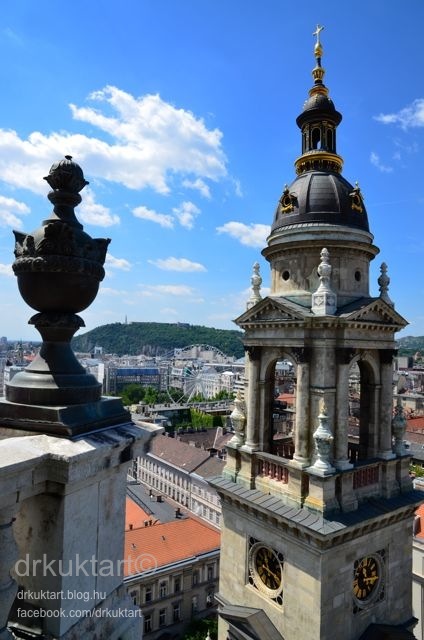
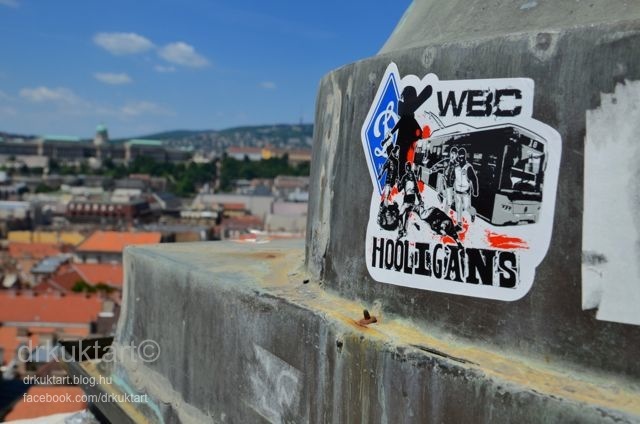
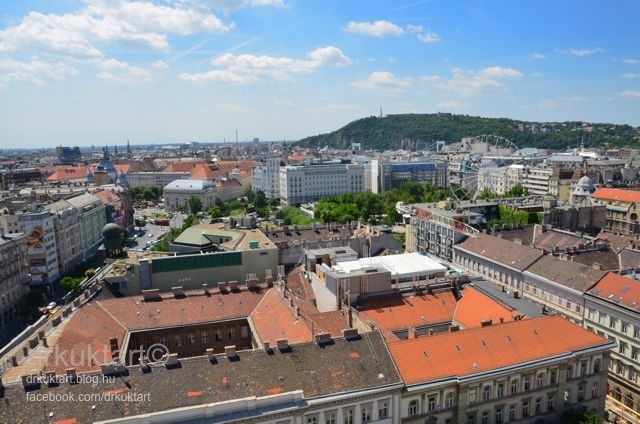
…a Deák teret és az Erzsébet teret...
…Deák square (Deák tér) and Erzsébet square (Erzsébet tér)...
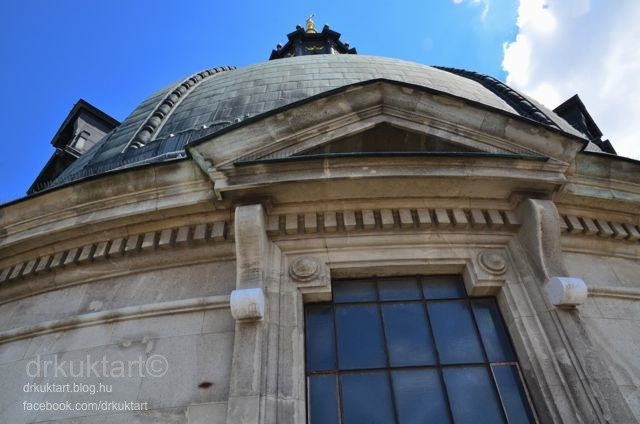

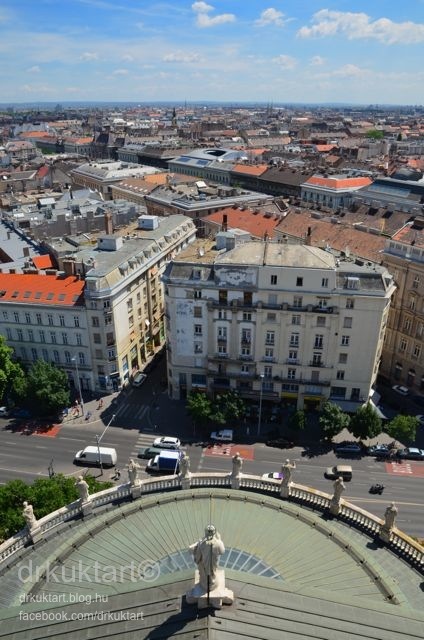
…az Andrássy utat és a Bajcsy-Zsilinszky utat...
…Andrássy avenue (Andrássy út) and Bajcsy-Zsilinszky way (Bajcsy-Zsilinszky út)...
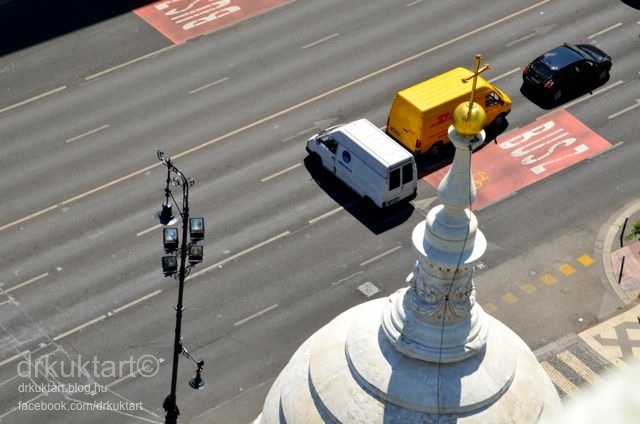
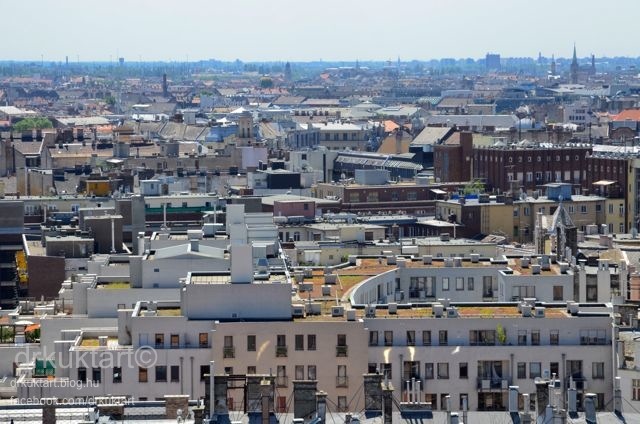
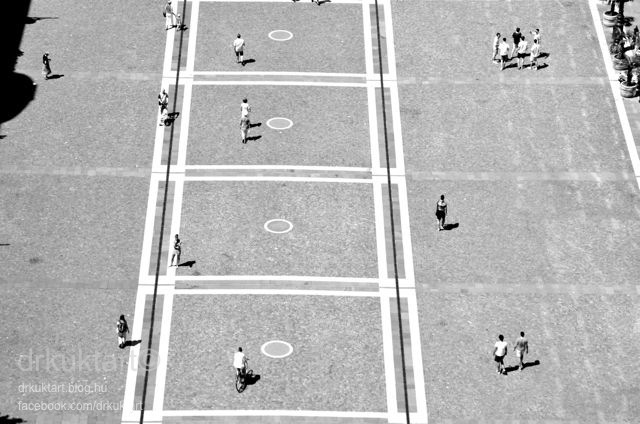
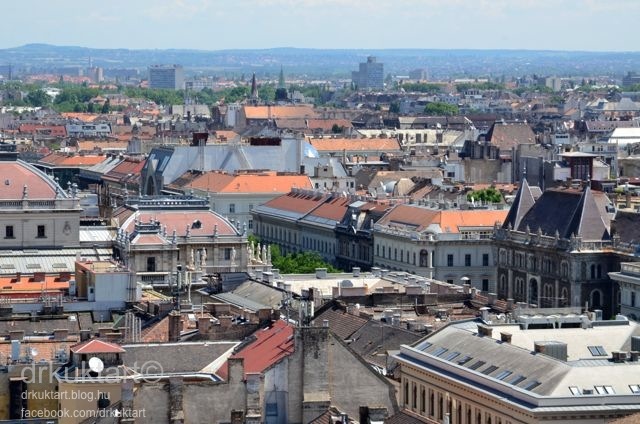
…a Magyar Állami Operaházat, az egykori Állami Balettintézetet (Drescher Palota, amely Lechner Ödön és Pártos Gyula tervei alapján épült), valamint a Párizsi Nagyáruház épületét tetején a 360 Barral...
...the Hungarian State Opera, the former building of the Ballet Institute (or on its other name the Drescher Palace which was built according to the plans of Ödön Lechner and Gyula Pártos) and the building of the Parisian Big Shopping Hall where the 360 Bar is located...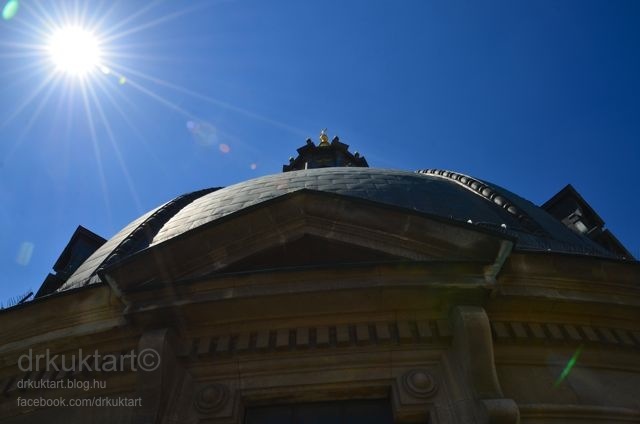

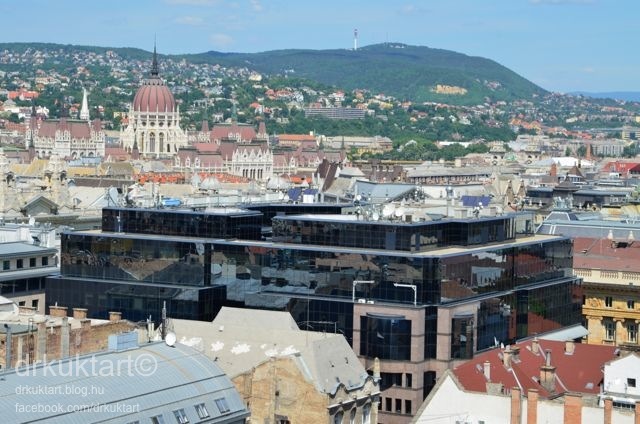
…a Parlament épületét (a csodálatos parlamenti enteriőrről itt írtam, míg a külső megjelenésről itt, itt és itt) és a Hármashatár-hegyet. Többek között ezeket látod, de a felsorolás korántsem kimerítő.
…the building of the Hungarian Parliament (you can find my post about this beautiful building (I wrote about the amazing enterior of the Parliament here and about the outside here, here and here) and the Three Border Mountain in the background (Hármashatár-hegy). You can see these buildings and area of Budapest listed above inter alia from the cupola, but I warn you, this is not a fully detailed list.
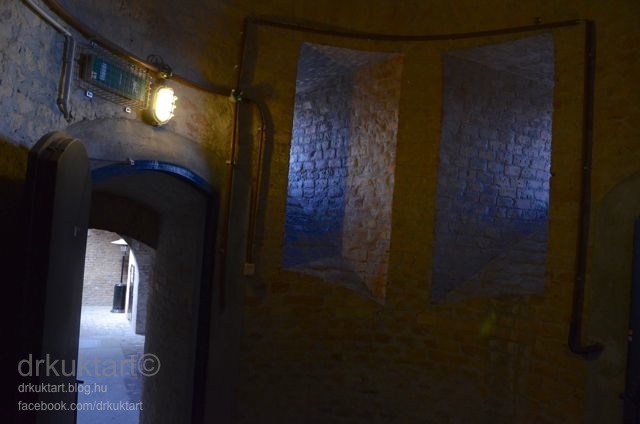

A csigalépcső felülről.
The spiral staircase from above.
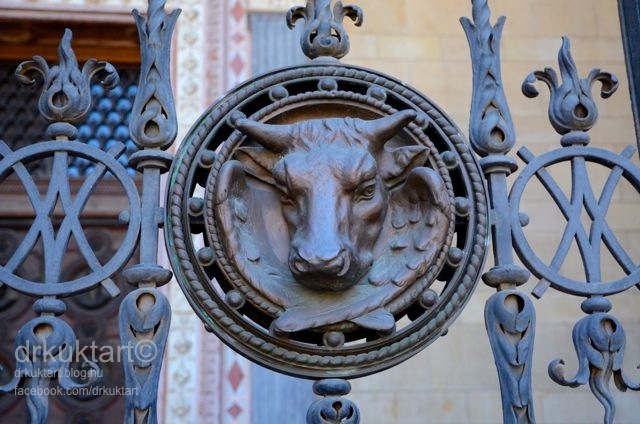
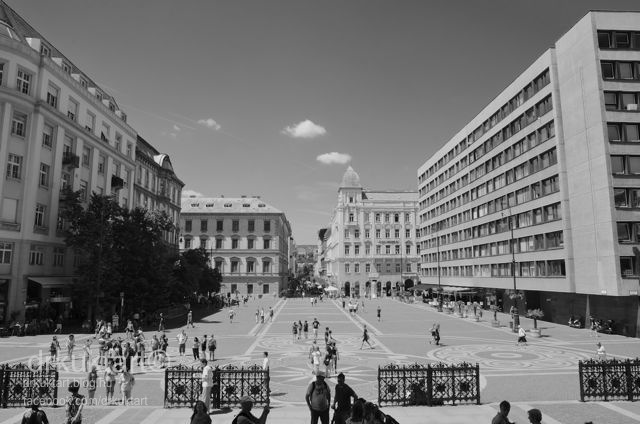
A Szent István tér immár majdnemhogy béka perspektívából.
The view of St. Stephen's square (Szent István tér) from the main entrance.
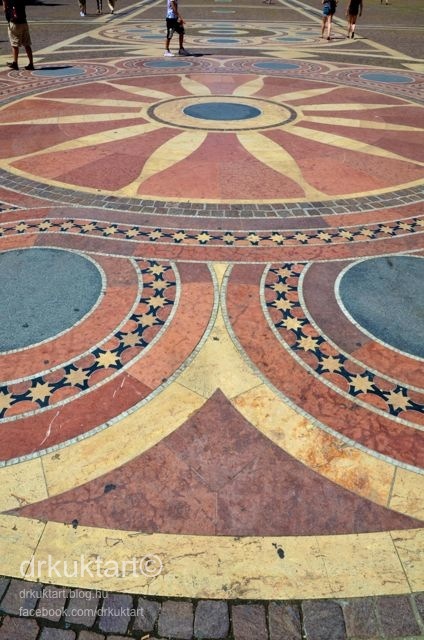
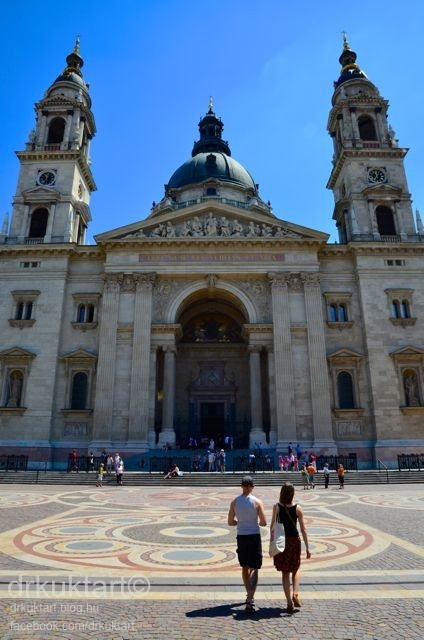

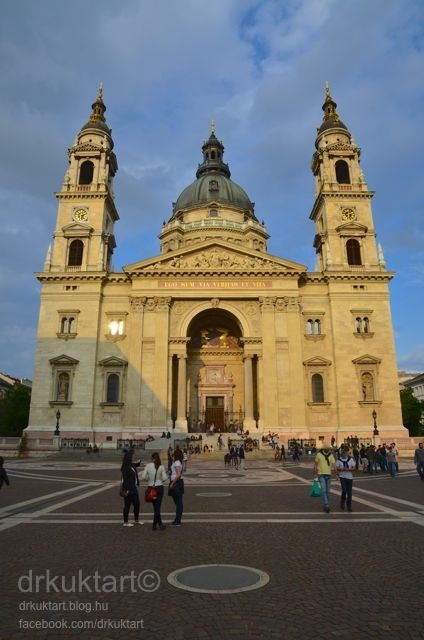
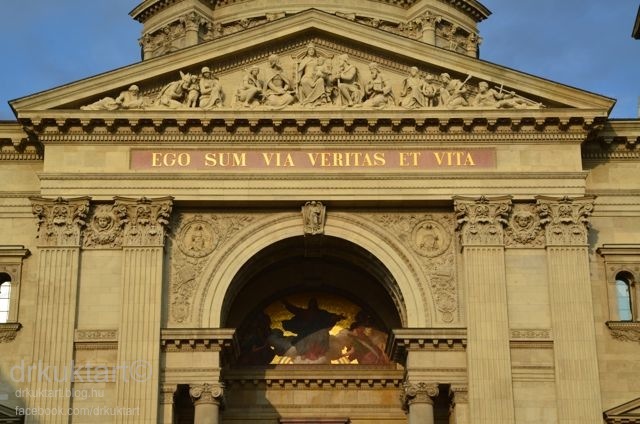
"Ego sum via veritas et vita", ami annyit tesz "Én vagyok az út, az igazság és az élet".
'Ego sum via veritas et vita' which means 'I am the way, the truth and the life'.
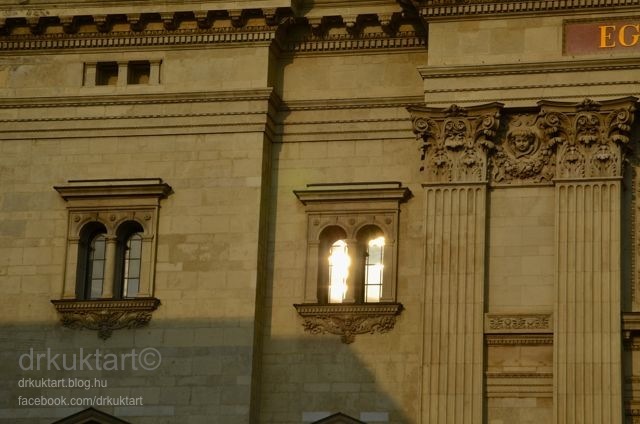
A Bazilika ablakaiban visszatükröződő naplemente.
The reflection of the sunset on the windows of the Basilica.

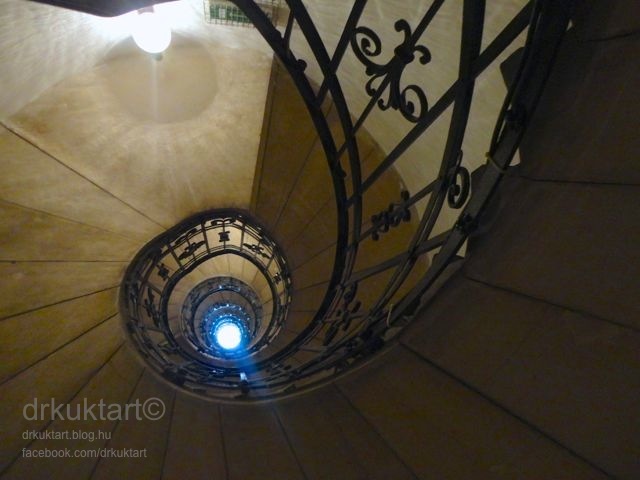
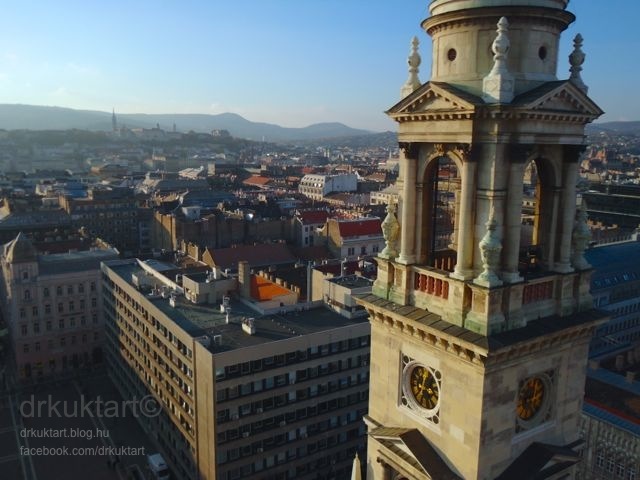
A Bazilika és környéke délután.
The Basilica and its neighborhood in the afternoon.
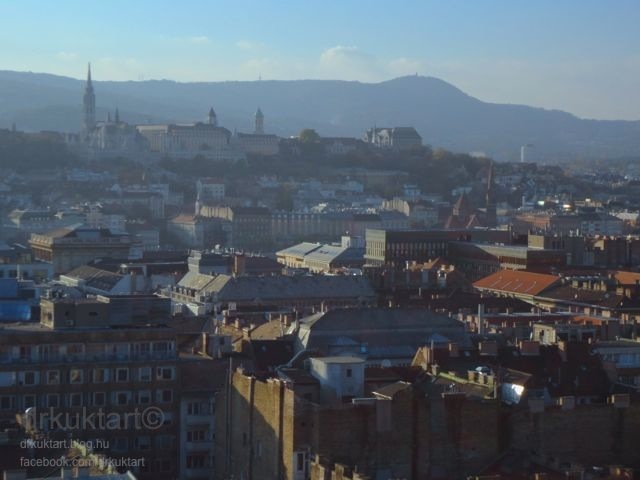

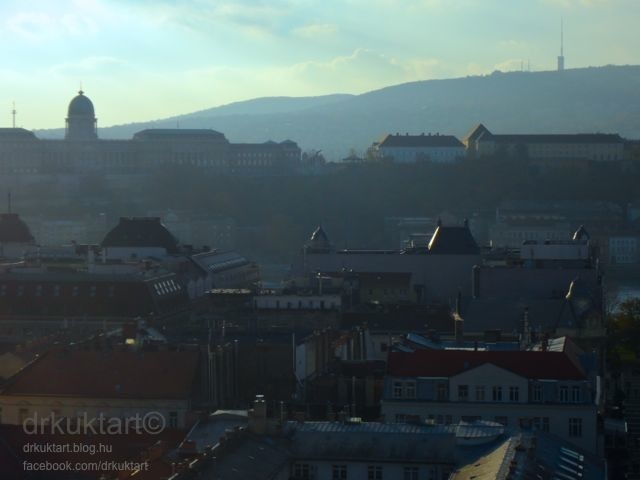
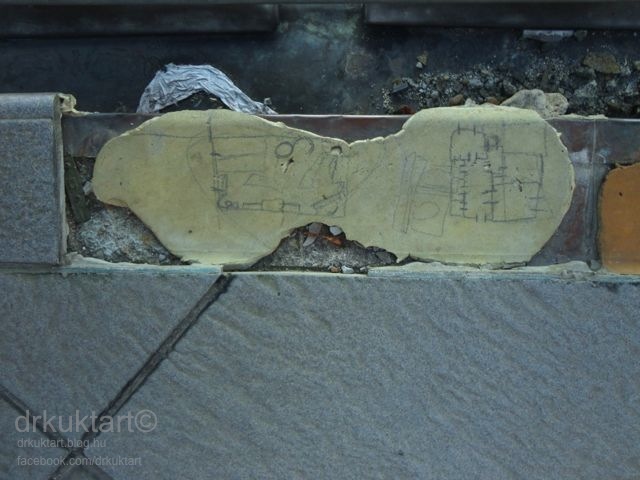
"Stílusos" pótlás a kilátóban.
'Stylish' supplement in the cupola.
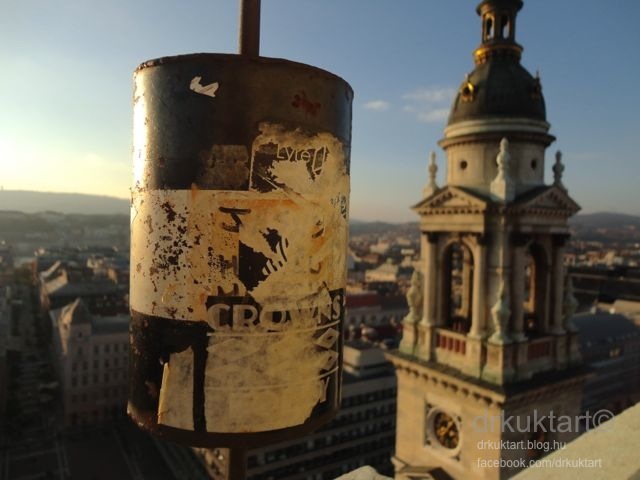

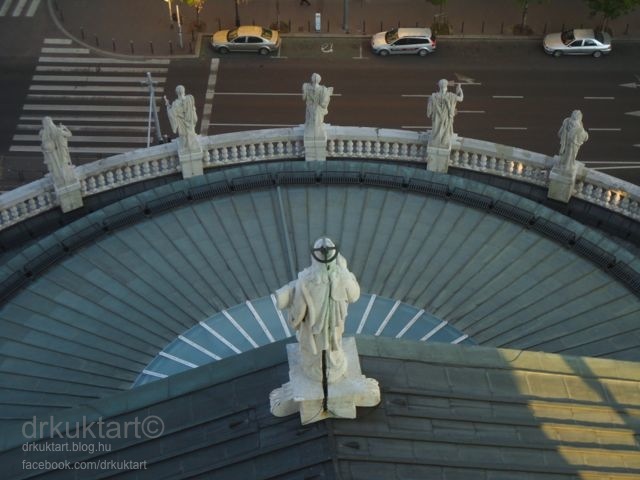
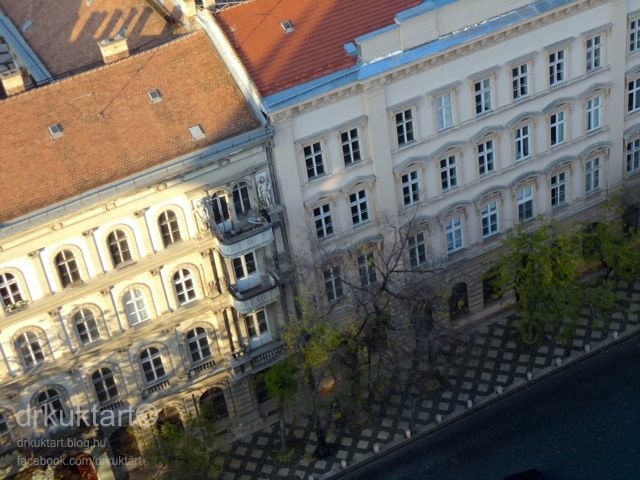
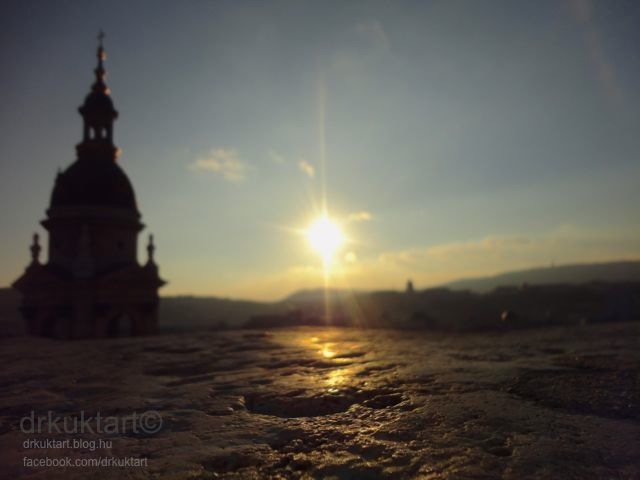
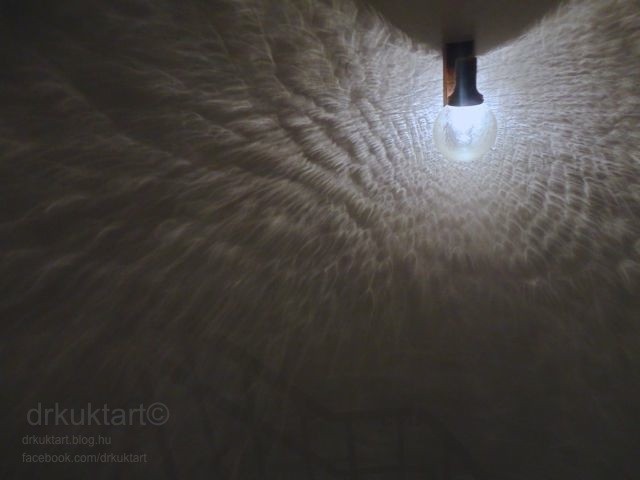
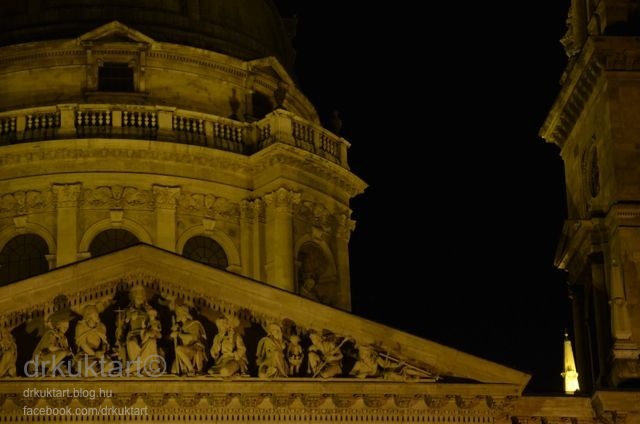
És nem utolsó sorban a Szent István Bazilika éjszaka. Azért megnézném ilyenkor miként fest belülről.
And the view of the Basilica at night.
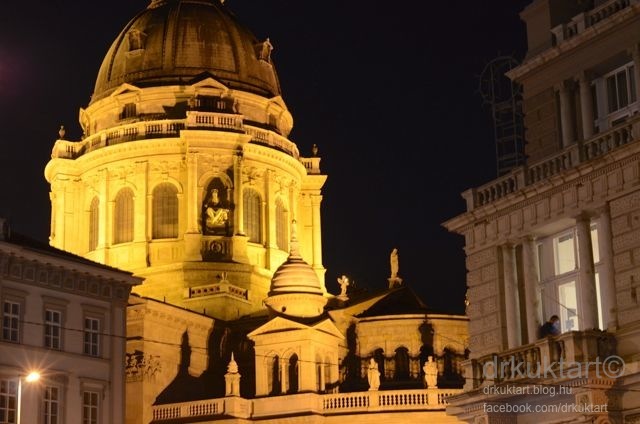
A székesegyház az Andrássy útról.
The view of the St. Stephen's Basilica from Andrássy avenue (Andrássy út).
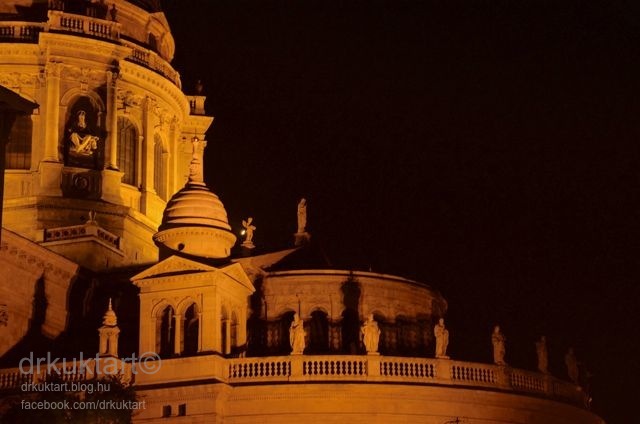
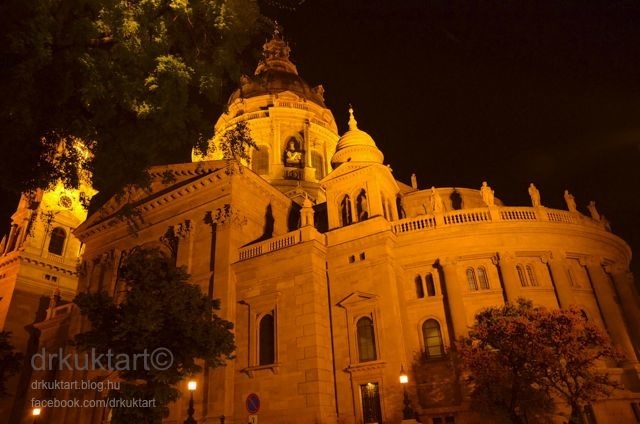
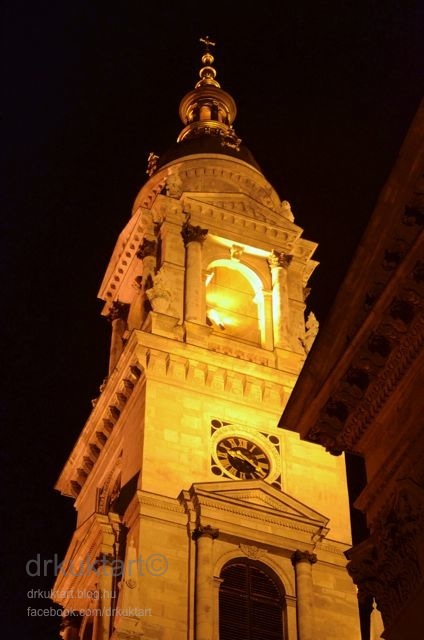
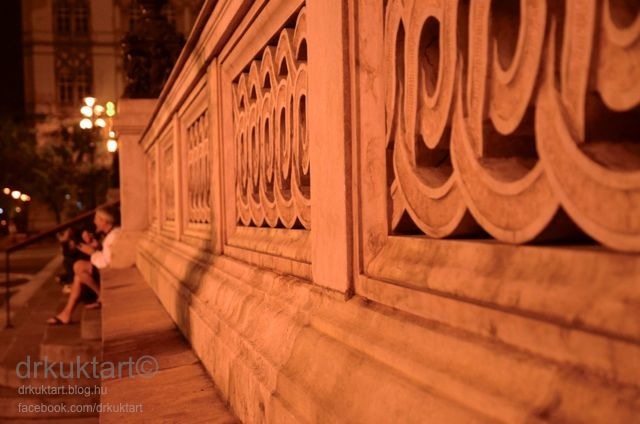
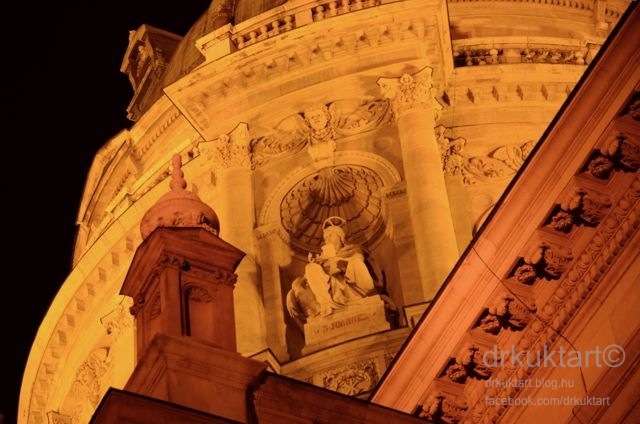
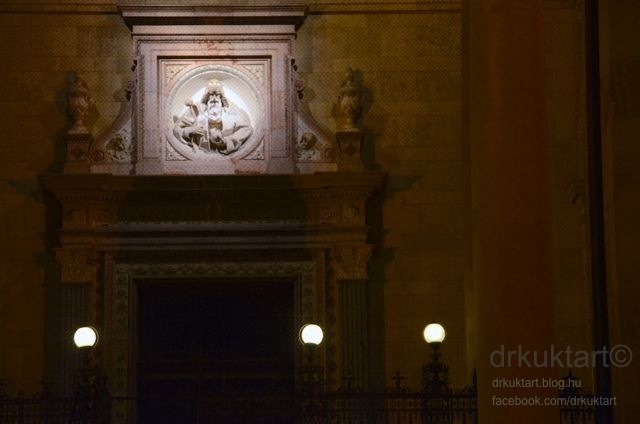
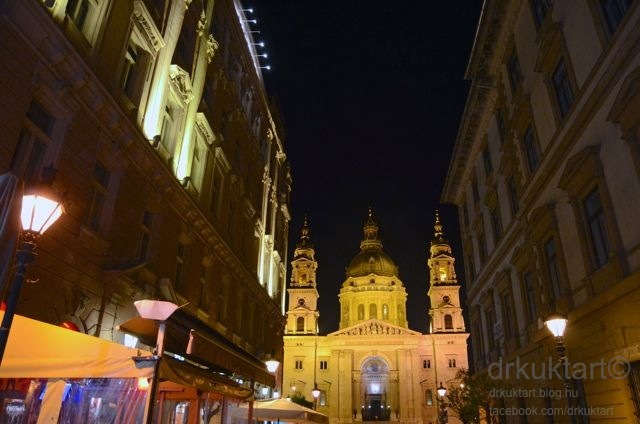
If you like this post, follow me on Facebook HERE or Instagram HERE.
DRKUKTA

